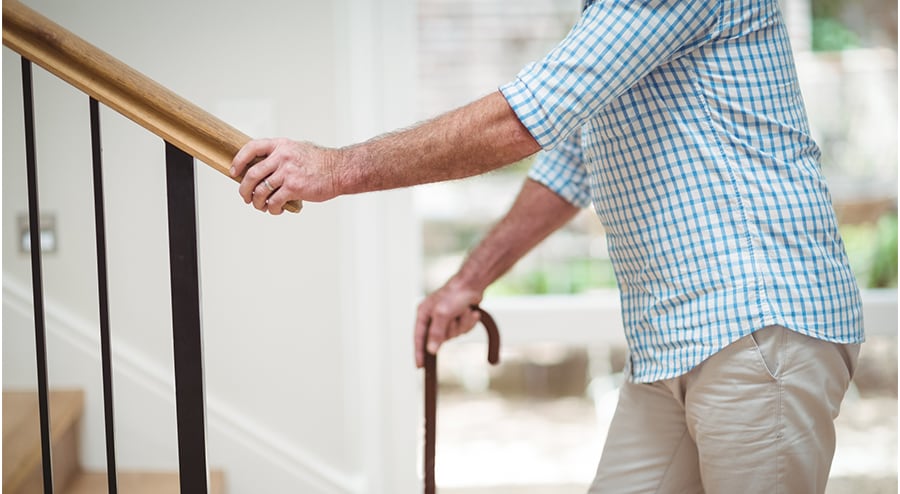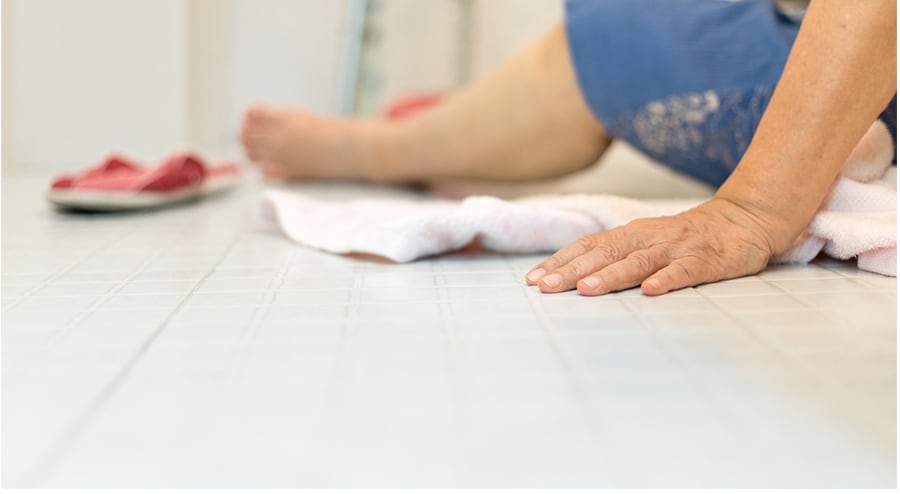Falls in the home pose a serious risk for seniors. The World Health Organization lists unintentional falls as the second leading cause of death worldwide, but of all age groups, those aged 65 and older are most prone to fatalities from falls. Unfortunately, the Centers for Disease Control and Prevention (CDC) estimates that while one in every four seniors falls each year, fewer than half of the seniors who fall inform their doctors. This means that fall risks, whether coming from a medical condition or conditions in a senior’s home, can go undetected for quite some time—and they may only become obvious when a senior experiences a life-limiting accident.
For this reason, it’s best to be aware ahead of time of the common causes of falls. Because generally speaking, a fall doesn’t just happen. There is almost always an underlying cause. It may be a condition that impairs one’s mobility or an environmental factor in the home. Looking for fall risks—and taking steps to eliminate them—is the best way to keep a senior safe and living independently for many years to come.
Health Factors in Falls
Poor health and the effects of aging can significantly increase fall risks. Some of these factors include:
- Chronic conditions, such as vertigo or Ménière’s disease, or acute illnesses, such as influenza, that throw off a person’s sense of balance.
- Chronic conditions like arthritis and osteoporosis that affect a person’s mobility and/or agility.
- Sudden medical events such as a seizure, cardiac arrest, or fainting that cause a person to fall.
- Some medications like tranquilizers, sedatives, and even over-the-counter medications can affect balance.
- The effects of aging, which generally include a loss of muscle strength can make it harder for a senior to navigate their physical environment (stepping in or out of a bathtub at shower time, for example).
- Vision problems.
The best defense against health-related falls is to keep in touch with a doctor and be sure to ask them about health conditions or medications that might make a fall more likely. A doctor may also be able to suggest strategies for lowering health-related falling risks. In addition you can, under a doctor’s supervision, encourage activities that increase physical stamina and balance. Low impact activities like yoga, walking, and water aerobics can be adapted for the elderly and have been shown to improve balance, coordination, and flexibility.
Addressing Non-Health Risks
Some risk factors for falling are purely environmental. Common items in the home, such as loose rugs, steps, or items left on the floor can present obstacles to an elderly resident. Pets can cause falls as well. If you or someone you love is a senior, you cannot afford to ignore the role their physical environment could play in contributing to a fall. Instead, consider these actions to reduce the potential risk:
- Adapt the physical environment to accommodate the family member. Look for places that may be pose particular risks—bathrooms, stairs, walkways—and remove or adapt them for easier access.
- Make the bathroom easier to use by installing a handicapped-accessible toilet or shower stall. Some items such as shower seats, grab bars, or a raised toilet seat are inexpensive and easy to install, and go a long way to making an ordinary bathroom safer.
- Remove anything that could be a tripping hazard, such as electrical cords, rugs, or obstacles, from the walkways of the home.
- Install sturdy handrails or ramps to make stairs easier to navigate.
- Use automatic LED night lights to provide light in commonly used areas such as bathrooms.
- Make sure that light switches are easy to access, and place a light within reach of the bed.
The National Council on Aging sponsors a Falls Free Initiative to raise awareness about the seriousness of falls for the aging. Their purpose is to prevent falls in the home and in public in order to maximize the independence and quality of life for seniors. Their 2015 Falls Free National Falls Prevention Action Plan provides valuable action steps to take to reduce the risk of falls.
The Rising Cost of Falls
A single fall can be costly. About 20 percent of all falls results in serious injuries such as a broken bone or head injury, and of the 2.8 million seniors who fall each year, about 800,000 are admitted to the hospital. Medical expenses for falls are around $31 billion each year, with hospital costs accounting for two-thirds of the total expense.
In addition, once a senior has fallen, he or she is twice as likely to fall again. And as seniors become aware of fall risks, they may give up activities they once enjoyed, leading to a sense of isolation or helplessness, which means that falls can have serious consequences emotional health of the seniors in your life even beyond the physical and financial toll. The good news, however, is that by encouraging strengthening activities, discussing falls directly with a medical professional, and adapting the physical environment accordingly, you can assist your loved one in maintaining a feeling of control and independence in their life.



